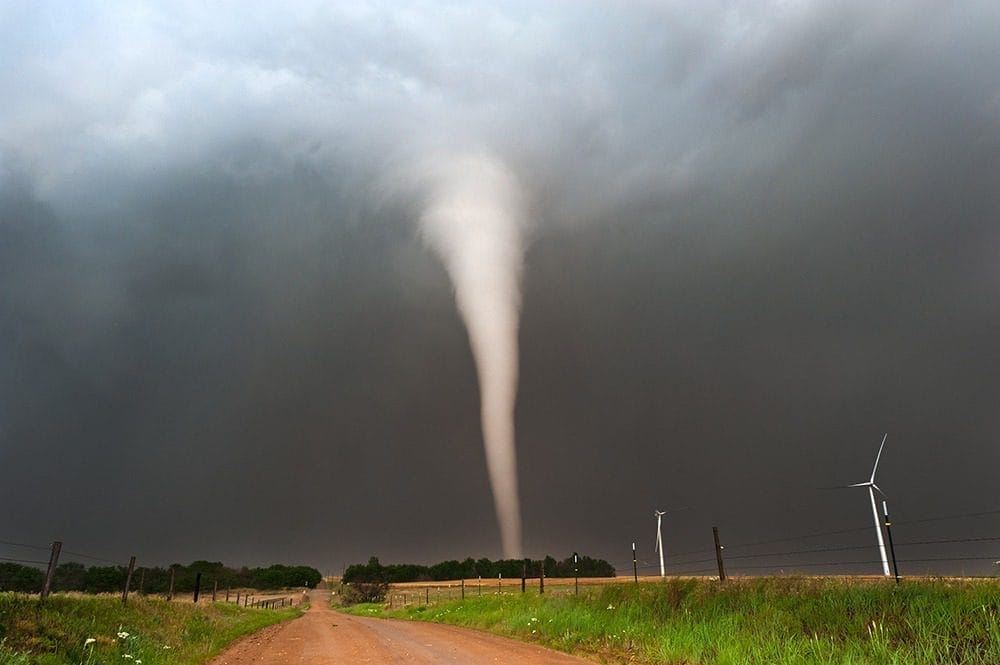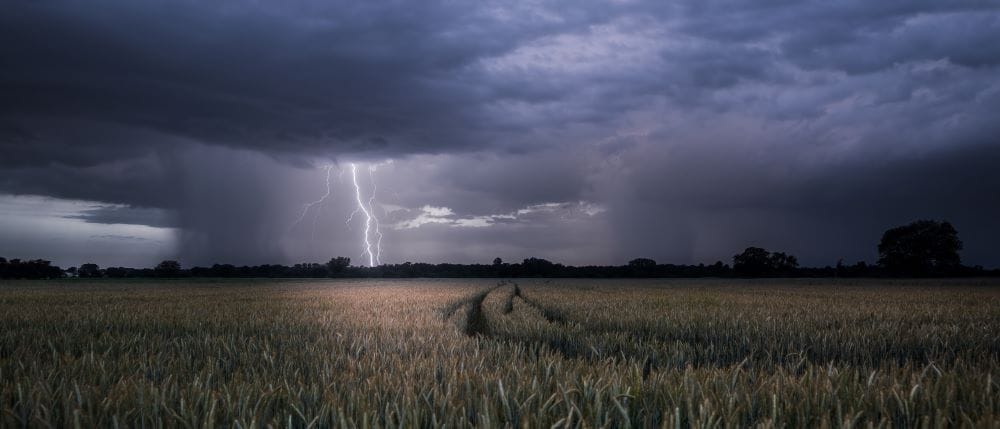El Niño Demystified: Insights into its Impacts and Mitigation
The Climate Prediction Center sees favorable chances of an El Niño, and the possibility of a strong El Niño, to occur starting in 2023. (USA Today) In the realm of weather patterns, El Niño is a phenomenon that has captivated scientists, weather forecasters, and curious minds alike for decades. With its ability to disrupt normal climate patterns on a global scale, El Niño represents a fascinating interplay between the ocean and atmosphere. However, its impacts can be severe and it’s crucial to understand their potential extent and how to best mitigate their severity.
Understanding El NiNo
El Niño, meaning “The Little Boy” in Spanish, refers to the warming of ocean surface temperatures in the central and eastern equatorial Pacific Ocean. It is a part of a larger phenomenon called the El Niño-Southern Oscillation (ENSO). ENSO includes three main phases: El Niño, La Niña, and neutral conditions. El Niño occurs irregularly, usually every 2 to 7 years, and lasts for about 9 to 12 months. This climate pattern primarily develops over the Pacific Ocean along the coast of South America. While its exact triggers are not yet fully understood, it typically arises when the trade winds weaken or reverse, causing warm surface waters to migrate eastward. The phenomenon typically reaches its peak around December and January, earning it the nickname “Christmas Child.”
Large-Scale Impacts
- Weather patterns are disrupted by El Niño, leading to a cascade of effects. It often causes drought conditions in normally wet areas (e.g., Australia and Southeast Asia) and brings heavy rainfall and floods to typically arid regions (e.g., parts of South America and the southwestern United States). These shifts in precipitation patterns can have severe consequences for ecosystems, agriculture, and infrastructure.
- El Niño’s warm waters disturb marine ecosystems, affecting the abundance and distribution of marine species. Coral bleaching events become more prevalent as the increased water temperatures stress coral reefs, leading to the loss of biodiversity.
- The planet’s atmospheric circulation patterns are impacted by El Niño, resulting in changes to global wind patterns and storm tracks. This can influence the frequency and intensity of tropical cyclones, affecting coastal regions susceptible to severe weather events.
Seasonal Impacts
El Niño, as a climate phenomenon, can have significant impacts on both the hurricane and wildfire seasons. However, it’s important to note that El Niño is just one of several factors that influence these natural disasters, and its effects can vary from region to region. Understanding these impacts is crucial for disaster preparedness and response efforts in vulnerable areas.
Hurricane Season
During an El Niño event, the occurrence and intensity of hurricanes in the Atlantic Ocean tend to be reduced. El Niño creates atmospheric conditions that inhibit hurricane formation and development. These conditions include stronger wind shear (the change in wind speed and direction with altitude) and increased stability in the atmosphere, which can suppress the growth of tropical storms.
The stronger wind shear caused by El Niño can disrupt the organization of developing storms, making it more difficult for them to intensify into hurricanes. Additionally, the increased atmospheric stability can limit the vertical motion and thunderstorm activity necessary for hurricane formation. As a result, the number of named storms and hurricanes in the Atlantic Basin during El Niño years tends to be lower compared to neutral or La Niña years.
Conversely, in the Pacific Ocean, specifically the central and eastern Pacific, El Niño can enhance the development of tropical cyclones. These cyclones are known as hurricanes or typhoons, depending on the region. The warmer sea surface temperatures associated with El Niño provide favorable conditions for storm development, resulting in an increase in the number and intensity of hurricanes in the Pacific.
Wildfire Season
El Niño’s impact on wildfires is primarily felt in regions where the phenomenon causes shifts in precipitation patterns, leading to drier or wetter conditions. These effects can vary depending on the specific location.
During El Niño, the western coast of North America, particularly California, may experience increased precipitation, which can help alleviate drought conditions and reduce the risk of wildfires. The increased rainfall can promote the growth of vegetation, reducing the availability of dry fuels that contribute to wildfires.
In contrast, El Niño can bring drier conditions to Southeast Asia and Australia. These regions may experience reduced rainfall, leading to an increase in the risk of wildfires. Drier vegetation becomes more susceptible to ignition, and the lack of moisture can facilitate the rapid spread of fires.
In Europe, specifically Spain, fire fighters are preparing for the drier conditions that may lead to more wildfires. The recent hot weather has forced the prevention campaign to start earlier, along with recruiting more firefighters. During this spring, Spain has already experienced conditions typical of summer. So far this year more than 58,000 hectares have already burned. (euronews.green)
It’s important to note that while El Niño influences precipitation patterns, it is just one factor affecting wildfire risk. Other factors, such as local climate conditions, land management practices, and human activities, can also significantly impact wildfire occurrence and severity.
Impacts on Industries
El Niño can have significant financial impacts across various sectors due to its influence on weather patterns and natural disasters. The rapidly developing atmospheric shift could result in a worldwide economic loss of upwards of $3 trillion through the end of the decade — costing some nations more than others. According to a paper published Thursday in the journal Science, the El Niño predicted for 2023 alone could result in more than $3 trillion of lost income by 2029. (Axios) Overall, the financial consequences of El Niño highlight the importance of understanding and preparing for its potential effects across multiple sectors.
Energy
The energy sector can be significantly impacted by an El Niño. For example, countries heavily reliant on hydroelectric power may experience reduced water levels in reservoirs due to decreased rainfall, leading to lower electricity generation. Conversely, regions prone to increased rainfall during El Niño may see a boost in hydroelectric output. Additionally, changes in weather patterns can affect energy demand, particularly in sectors such as heating and cooling, which affects consumption and pricing.
Agriculture
El Niño can disrupt agricultural productivity, leading to financial losses for farmers and agricultural industries. The phenomenon’s effects on precipitation patterns can result in droughts in some regions and excessive rainfall in others. Droughts can lead to crop failures, reduced yields, and increased irrigation costs. Conversely, heavy rainfall can cause flooding, soil erosion, and damage to crops, affecting productivity and increasing post-harvest losses. These disruptions can result in decreased agricultural output, higher food prices, and financial strain for farmers and the agricultural sector as a whole.
Insurance
The insurance industry can face severe financial challenges from an El Niño. The increased occurrence of extreme weather events associated with El Niño, such as hurricanes, floods, and wildfires, can lead to a rise in insurance claims. Insurers may face increased payouts for property damage, infrastructure repairs, and business interruption losses. Moreover, the unpredictability and magnitude of these events can make risk assessment and management more complex, potentially affecting insurance premiums and profitability.
Impacts Vary per Location and Industry
It’s important to note that the financial impacts of El Niño can vary depending on the specific region, the magnitude and duration of the event, and the preparedness and resilience of different sectors. Timely monitoring, effective risk management strategies, and investment in climate technology can help mitigate some of these financial impacts and increase the ability to adapt to changing conditions.
How Forecasting Tools Help
Accurate forecasting tools play a crucial role in mitigating the impacts of El Niño by providing valuable information and early warnings to various sectors. Here are some ways in which accurate forecasting tools can help in mitigating the impacts of El Niño:
Early Warning Systems
Accurate forecasting tools enable the development and implementation of effective early warning systems. These systems can provide timely information about the onset and intensity of El Niño, allowing governments, communities, and industries to prepare and take proactive measures. Early warnings can help in initiating response plans, mobilizing resources, and implementing strategies to minimize the potential impacts.
Agriculture and Food Security
Accurate forecasts of El Niño can assist farmers, agricultural organizations, and policymakers in making informed decisions related to crop selection, planting, and irrigation management. Farmers can adjust their agricultural practices based on the predicted precipitation patterns, optimize water usage during dry spells, and take appropriate measures to protect crops from extreme weather events. Accurate forecasts also enable governments to anticipate potential food shortages and implement measures to ensure food security through import planning, stockpiling, or targeted assistance programs.
Hydro Resources Management
El Niño’s impact on water availability is significant. Accurate forecasts help water resource managers and policymakers make informed decisions regarding water allocation and management strategies. Forecasts allow them to anticipate droughts or increased rainfall and adjust water distribution systems accordingly. This includes optimizing reservoir storage, managing hydroelectric resources, implementing water conservation measures, and establishing drought response plans to ensure water availability during dry periods. Similarly, accurate forecasts help in flood preparedness by allowing authorities to implement flood mitigation measures and warn communities in advance.
Disaster Preparedness and Response
Accurate forecasts aid in enhancing disaster preparedness and response efforts. Early warnings of El Niño-associated hazards, such as hurricanes, floods, or wildfires, enable emergency management agencies to develop comprehensive response plans, allocate resources effectively, and coordinate evacuations, if necessary. Accurate forecasts also help in improving the accuracy of evacuation orders, reducing the potential for loss of life and property. Please read our governments page for more information about how accurate forecasting tools can help government agencies.
Economic Planning and Risk Management
Accurate forecasting tools provide valuable information for economic planning and risk management. Governments, businesses, and insurance companies can use these forecasts to assess the potential impacts of El Niño events on various sectors, such as agriculture, energy, and insurance. This information helps in developing risk management strategies, adjusting pricing models, and allocating resources to mitigate financial risks associated with El Niño-related events.
Standard Forecasting Tools Won’t Do
Accurate forecasting solutions like Climavision’s Horizon AI Forecasting product suite empower decision-makers to anticipate and prepare for the impacts of El Niño driven weather events, thereby reducing vulnerability, increasing resilience, and minimizing potential damages. Fast and accurate forecasts are crucial to improved resource allocation, enhanced disaster preparedness, and the ability to respond effectively to the challenges posed by this climate phenomenon.
Do you have a forecasting tool that you can confidently rely on to accurately warn your community or organization of the coming El Niño impacts? The standard approach to Numerical Weather Prediction (NWP) is no longer sufficient in this era of new weather extremes. At Climavision we are revolutionizing this approach at several levels.
First, we are increasing unique observational data from multiple sources like space-based observations and other novel data set sources, giving more insight into what is happening even in remote areas in real time. The more data there is to input into weather models, the more accurate the model outputs will be generally. However, it cannot stop at just the observational data – the model itself needs to be optimized to accurately interpret the current observations to predict what will happen.
Climavision’s Horizon AI Global, HIRES, Point, and Subseasonal and Seasonal models not only are proprietary NWP models developed by our experts in meteorology, they are all powered by Climavision’s revolutionary HPC, cloud based tech platform allowing for increased processing speeds and machine learning to deliver the fastest most accurate forecasts to businesses and communities. If you’d like to learn more about how this revolutionary insight may benefit your organization, contact us.




